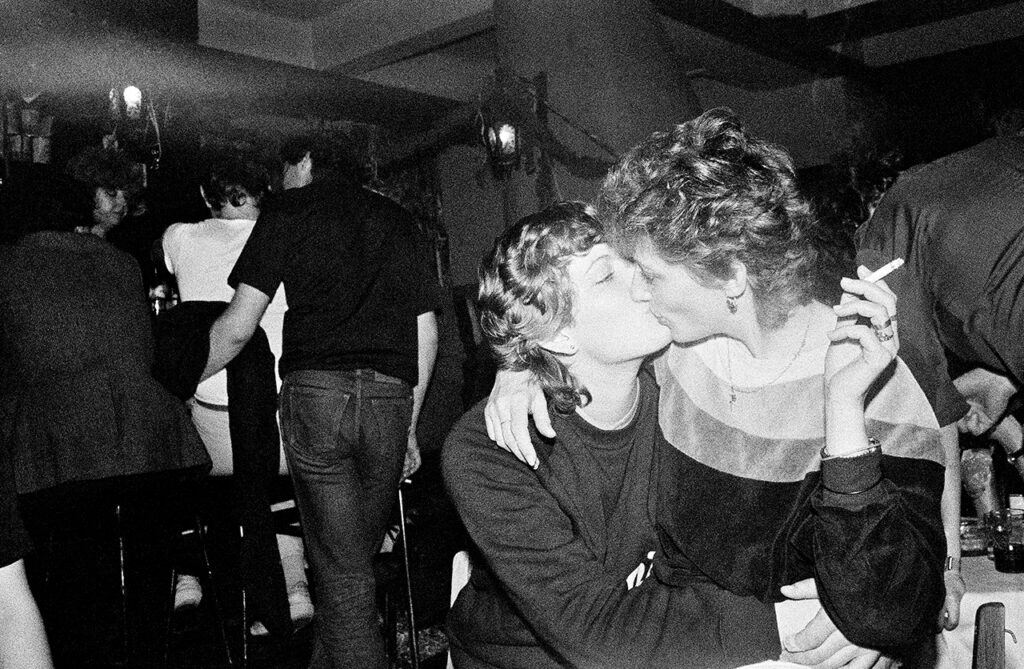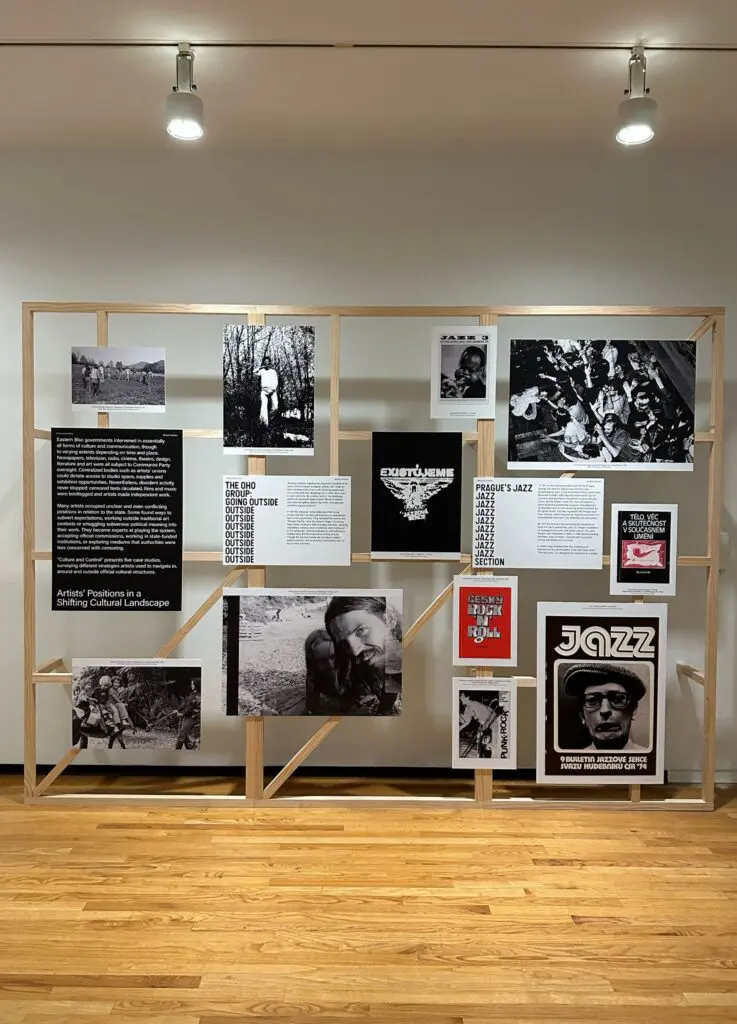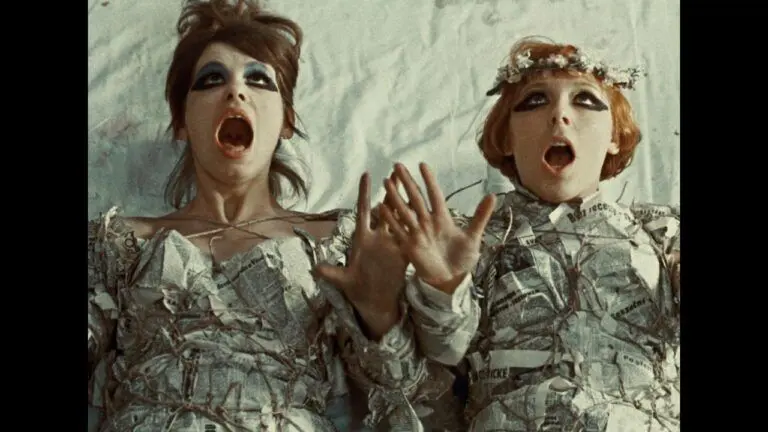How Music Fueled Counterculture in the Eastern Bloc
From punk to jazz, music shaped counterculture. Discover how music fueled artistic rebellion in Multiple Realities: Experimental Art in the Eastern Bloc, 1960s–1980s.
Discover more and plan your visit to the Gallery to see the exhibition, now on view until April 21, 2025.
An Underground Playlist

Libuše Jarcovjáková, Selection from the T-Club series, Prague, c. 1980s, black and white photograph, Courtesy of the Artist, Prague, Photo: Courtesy Libuše Jarcovjáková
Artists working in alternative and underground art scenes in the Eastern Bloc turned everyday activities—like playing ping-pong, face painting or even listening to music together—into creative experiments.
The very act of sharing space and time became the work of art.
From punk concerts to underground queer clubs, music and nightlife venues were also important sites of intimacy and artistic innovation in this era. Music was one of the most diverse and progressive areas of culture in the Eastern Bloc.
Countercultures formed around rock, jazz, punk, industrial and electronic music. These loose communities modelled alternatives to the Bloc’s highly organized and tightly regulated social life. While many of these musical styles originated in the West, they found unique expression in each of the six countries represented in Multiple Realities: East Germany, Poland, Czechoslovakia, Hungary, Romania and Yugoslavia.

Scrappy, self-made zines, audiotapes and videos circulated throughout the region, countering official media. DIY spaces hosted underground musicians as well as other artists and performers.
While most Eastern Bloc musicians did not explicitly advance a political agenda, countercultural expression could still be risky.
In 1971, in the repressive aftermath of the Prague Spring, the Jazzová Sekce (Jazz Section) was established as part of the Communist Party-controlled Musician’s Union. Officially, the organization put on concerts and published newsletters to promote jazz music.
But its leader, Karel Srp, soon developed a more expansive publishing program, including texts on literature and art and works by writers banned by the government. Srp also organized the Prague Jazz Days festival, which became an important platform for experimental musicians not vetted by the authorities. In 1999 it was revealed that Srp worked as an informer for the secret police under the code name “The Musician,” an allegation he continues to contest.

Installation view of Multiple Realities: Experimental Art in the Eastern Bloc, 1960s–1980s, exhibition at the Vancouver Art Gallery, December 13, 2024 to April 21, 2025, Photo: Vancouver Art Gallery
Like their peers in the West, artists in Central Eastern Europe explored the structure and form of music. These experiments blurred boundaries between artistic disciplines and challenged conventions of individual artistic authorship.
Slovak artist Milan Adamčiak, Polish artist Teresa Gierzyńska and Hungarian artist Katalin Ladik created graphic scores that break from the classical Western system of staff notation for representing a musical composition.
Sound and performance instructions are conveyed instead through visual arrangements of lines, shapes and squiggles; abstract drawings on film stock; and collaged sewing patterns. Each score invites creative decoding. A performer’s choices actively determine how each piece sounds.

